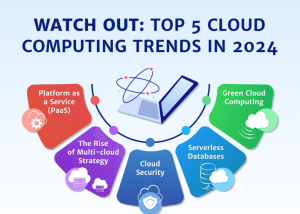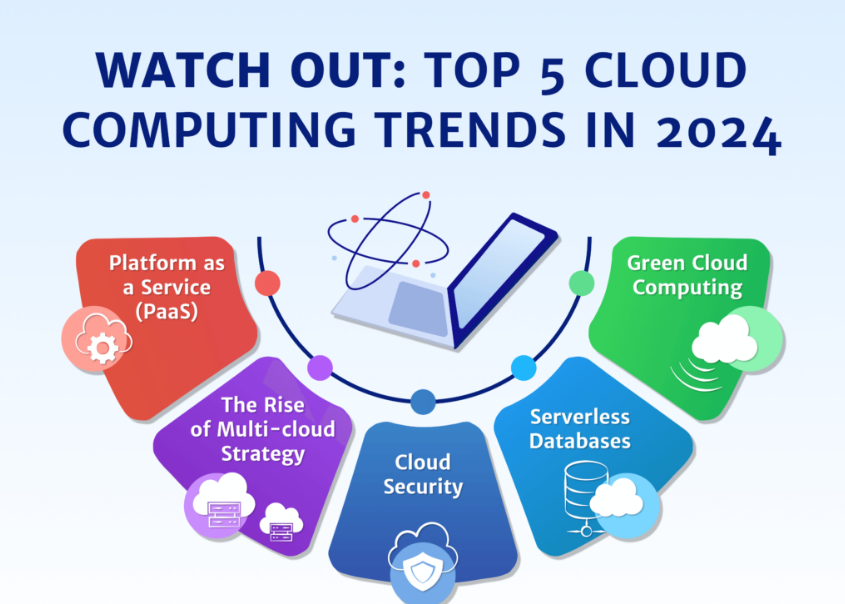Did you know that the cloud telephony market will reach $57.6 billion by 2023? This growth is not just a number but a testament to how cloud-based solutions are transforming business communications. Advanced telephony features, integration with AI and IOS, and the rise of remote work drive this growth. Even the pandemic couldn’t slow it down.

With 5G now in the picture, the possibilities are endless. Understanding the latest trends is crucial as more enterprises rely on this technology. In this blog, we’ll explore five cloud telephony trends in 2024 that are poised to shape the future of how businesses connect and communicate.
7 Cloud Telephony Trends Shaping the Future of Communication in 2024:-
The Rise of Unified Communications in Cloud Telephony:-
With the ability to integrate and integrate various communication channels, unified communications has emerged as a key trend in how businesses communicate and collaborate. In fact, the unified communications market is expected to grow to $169.82 billion during 2021 – 2027 at a CAGR of 35%.

UC powers a seamless blend of voice, video, messaging and collaboration applications on a single platform hosted within the cloud. This fusion allows for more fluid, real-time interactions across different geographic locations, fostering a more connected and agile workforce.
As a result, many organizations implementing VoIP solutions have migrated to UC. Experts feel that this trend is not stopping anytime soon and adoption has started. Unified Communications is shaping the future of cloud telephony, promising unprecedented connectivity and efficiency.
Guarding the Cloud: Implementing Ironclad Security Solutions:-
Cybercrime is one of the most serious challenges for enterprises seeking to protect consumer data. Security is at the forefront of technological innovation and cloud telephony is no exception.
As communication services migrate to the cloud, it has become essential to implement strong security solutions to protect sensitive information and maintain the integrity of business interactions.
The cost of a data breach goes far beyond disrupting business flows. Litigation and disaster management that damage brand reputation for such attacks.
Collaborating with leading cybersecurity vendors is an easy solution for entrepreneurs to arm themselves against security threats and vulnerabilities. Businesses want to comply with all ISO 27018 and 27031 guidelines implemented for data protection and disaster recovery planning.
Enhancing Customer Satisfaction through VOIP:-
Customer satisfaction has always been the cornerstone of successful business operations and has played a transformative role in the cloud telephony landscape. With new features and integrations, businesses can immediately engage with customers and clients to provide timely support and increase responsiveness.
The latest trends in cloud telephony technology focus on enhancing the customer experience through personalized, efficient and responsive communication channels.
Investing in automated service agents and sales process automation with business insights and data-driven architecture highlights key CX and ensures seamless connectivity.
Integrating customer feedback processes into these systems allows for continuous refinement of services, aligning them with customer expectations.
It represents an important trend that resonates with the modern emphasis on customer-centric solutions, innovation and business growth.
Leveraging IOT in Cloud Telephony:-
VoIP technology is evolving above and beyond the spectrum of sending voice notes and moving toward a connected environment of streamlined workflows.
The use and integration of Internet of Things has emerged as a compelling trend that is reshaping the form of modern communication.
IoT paves the way for more interconnected workspaces and plays an important role in data exchange across networked devices.
Combining cloud telephony with IoT devices enables businesses to create interconnected ecosystems that allow for smarter, more intuitive interactions.
Whether it’s automated routing of calls through innovative systems or real-time data collection to improve customer service, the convergence of IoT with cloud telephony is driving a new wave of innovation.
IoT represents a paradigm shift in how we perceive and use telecommunications. The combination of these technologies facilitates unprecedented levels of automation, personalization and efficiency, paving the way for more responsive and intelligent communication solutions.
The Remote Revolution: Upgrading workspaces:-
The pandemic has prompted remote and hybrid workspaces across industries to integrate flexible workflows. However, this wave of standardization has created innovative trends within cloud telephony technology.
As IoT can revolutionize how organizations work, optimizing the work environment has now become integral to ensuring seamless communication and collaboration.

Most CRM, CMS and other workflow management tools communicate with their utilities using cloud platforms. The flexible architecture of cloud telephony solutions supports the deployment of unified communications tools that cater to remote and on-site workers alike, bridging gaps and enhancing connectivity.
This technology empowers virtual shared workspaces, project management capabilities, and other team channels for employees to collaborate.
The adaptability of cloud telephony, along with its scalability, allows businesses to tailor their communications infrastructure to the unique needs of a hybrid workforce.
Integrating the Cloud for Enhanced Collaboration:-
Cloud integration and migration has become a central aspect of the evolution of cloud telephony technology, reflecting a larger shift toward scalable and agile communications solutions.
Modern communications undoubtedly rely on cloud infrastructure and are more cost-effective than developing and maintaining internal networks.
The trend toward integrating disparate systems into a unified cloud platform increases fluidity and accessibility of information.
It acts as a gateway for data integration in multifaceted organizations and encourages communication across segments.
Further, it empowers businesses to overcome the limitations of traditional hardware, enabling flexibility, cost-efficiency and seamless upgrades.
A 2024 Google Cloud study predicts that the macroeconomic climate will increase the use of cloud-based services and products by 41.9%.
Merging VOIP with AL for Futuristic Communication:-
We cannot overstate the application of artificial intelligence, and this market is projected to expand at a CAGR of 37.3% between 2024 and 2030, paving the way for new horizons for AI adaptive communication solutions.
From smart call routing to predictive analytics, AI is expected to occupy 95% of all customer interactions by 2025.
However, AI’s role is broader than automation and customer experience personalization. Data-driven insights power sentiment analysis and fraud detection to an unprecedented degree.
With real-time decision making and increased efficiency, what we are seeing now is the tip of the iceberg.
The confluence of AI and machine learning within cloud telephony is ushering in an era of smarter, more responsive communication channels.
The possibilities for marrying technology with human-like intelligence are limitless, and it remains to be seen how innovation, agility and scale increase with AI.
Wrapping Up:-
Cloud telephony technology brings agility and innovation that helps businesses and corporations grow. While not all trends blow your mind, you can never go wrong with one.
This technology enables a cost-effective, flexible and scalable approach for various business applications.
To ensure a sustainable business model, it is essential to look beyond the trends and identify the solutions that best suit your needs.
Small and large enterprises are relentlessly experimenting with cloud technology to facilitate holistic solutions to complex challenges.
